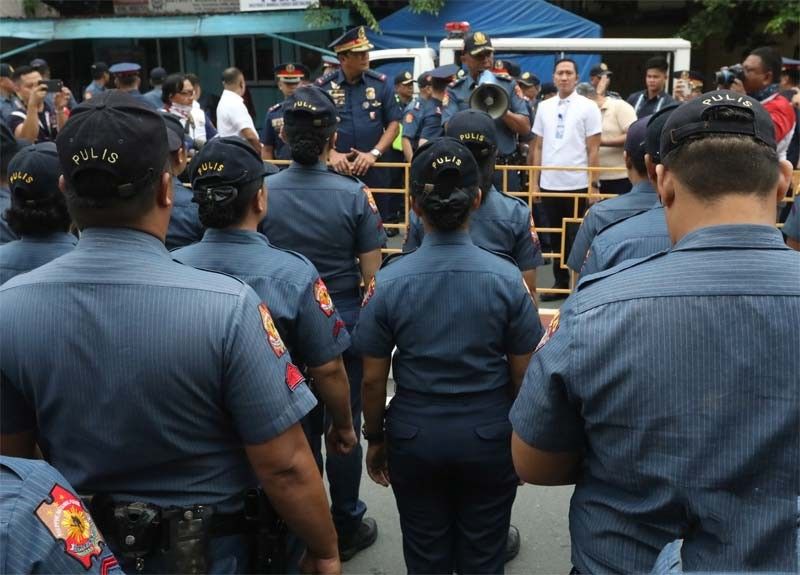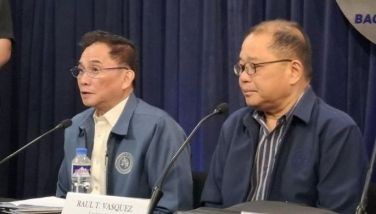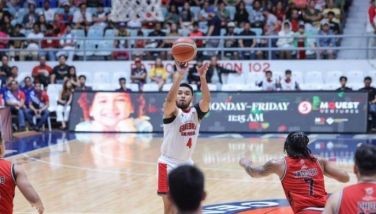Separate pension funds eyed for AFP, PNP

MANILA, Philippines — Separate pension funds for the military and police force will be established amid the “unique nature” of both services as the government moves to reform and make their benefit system more sustainable.
During a meeting of the House ad hoc committee on the military and uniformed personnel (MUP) pension system yesterday, the economic team of the Marcos administration presented a fine-tuned proposal based on the emerging consensus developed with different MUPs in the country.
This came after the economic team conducted consultations, focused group discussion and technical working groups with MUPs over a three-month period to push for pension reform amid the need for a wider fiscal space.
Deputy treasurer Erwin Sta. Ana said that at the core of the reform package is the creation of a separate pension fund for the military or for the entire Armed Forces and another one for other uniformed personnel.
“This recognizes the unique nature of military service and provides retirement benefits that reflect the sacrifices made by the MUP,” Sta. Ana said.
“The trust fund shall be funded through contributions from the MUP, supplemented by the proceeds from the sale or lease of MUP assets,” he said.
The current MUP pension system is non-contributory and, as such, retirement pensions and benefits are fully funded by the government through annual appropriations.
Reforming the system would mean that the MUP will need to contribute in order for them to enjoy their pension, which is the practice for private employees and state workers.
The economic team is also considering funneling the remaining assets of the Armed Forces retirement and separation benefit system into the fund.
To mitigate the burden of the mandatory contribution, Sta. Ana said the government is also studying the possibility of implementing loan restructuring and other similar measures.
The fine-tuned proposal includes a uniform retirement age of 57 or upon accumulation of 30 years of satisfactory service for the MUP, whichever is later, to ease pension administration and encourage those in the active service to stay longer.
A periodic review of the pension benefits will also be undertaken as well as a possible increase of up to 1.5 percent per year, subject to the evaluation of economic conditions and actuarial life of the pension fund, to keep up with inflation.
“The establishment of a sustainable framework for the financing and adjustment of pension benefits ensures that our MUPs receive adequate support for their well-being during and after their service,” Sta. Ana said.
He said the reform should be adequate to provide for a reliable source of post-retirement income and social safety net that can address the needs of the MUP retirees.
It is also envisioned to be fair and dignified, considering the extraordinary risks borne by MUPs over the course of their career.
Most importantly, it should be financially sound and sustainable over time, allowing the state to secure pensions for the current and future retirees and their dependents. “Even with these reforms, we reiterate that the MUP pension system will continue to be the most generous one run by the state. There will absolutely be no pension cuts consistent with the principle of non-diminution of benefits,” Sta. Ana said.
Earlier, Finance Secretary Benjamin Diokno said the current MUP pension system’s dependence on full government funding exposes it to economic and fiscal downturns and compromises its stability and reliability.
Bill OK’d
The committee approved the consolidated bill that seeks to reform the MUP pension system only after the MUPs gave their recommendations and agreed to the House’s version of the MUP bill.
“We are pleased to report to the President and to the public that we have formalized a solution to the MUP pension problem. The members of the ad hoc committee on the MUP pension system agreed in principle to an MUP pension reform that is amenable to both the military and the uniformed personnel as well as to economic managers,” committee chair Rep. Joey Salceda said in a statement.
“We can now see the light at the end of this fiscal tunnel. The services accepted. The economic managers see the substantial improvement that this formula makes over the current system,” he said.
Speaker Martin Romualdez described the measure as a “landmark legislation that demonstrates our unwavering commitment to the men and women in uniform.”
Romualdez said the measure would provide a robust, sustainable and fair pension system that recognizes the MUPs’ invaluable service to the nation.
It was Romualdez who ordered the creation of the committee to undertake discussions on the proposals to reform the MUP pension system.
Salceda gave assurance that the measure is a “win-win solution.”
“Because we are removing the risks of sudden spikes in pension liabilities while also ensuring that salaries and pensions increase at manageable levels,” he said.
The proposal includes a new provision that mandates the creation of a “window for indigent pensioners under the trust funds.”
The committee came up with this provision after someone pointed out during the hearing that 38 percent of MUP pensioners are “indigents” while the rest have moved on to new careers and established businesses.
Salceda said the committee agreed to provide “safety nets” for these indigent pensioners, who will be identified in the implementing rules and regulations.
The bill also fixes the retirement age for all MUPs at 57.
Among the approved provisions are the retention of existing provisions that allow the MUPs to retire one rank higher, a uniform 90 percent of longevity pay plus base pay in lump sum benefit upon separation for those who served less than 20 years, a uniform multiple of 1.0 multiplied by the number of years of service in lump sum benefit upon retirement, a guaranteed three percent annual salary hike for MUPs for 10 years, automatic indexation of pensions to 50 percent of the pay adjustment for active MUPs and a regular report every three years for the MUP pension system that are compliant with the International Financial Reporting Standards.
Other provisions include the creation of a special window or aid for indigent MUP pensioners under the trust funds; contribution scheme of five percent of the basic pay for the first three years, seven percent for the next three years and nine percent thereafter for active MUPs; contribution scheme of nine percent of the basic pay for new entrants and share from the government to complete the 21 percent contribution for pension.
Salceda did not agree to the creation of two separate trust funds – one for the military and one for non-military uniformed personnel, but he was outvoted by the MUP officers.
He said this would mean inequity in the benefits that the members of the Armed Forces would receive compared to other agencies because the military has more assets.
- Latest
- Trending


































